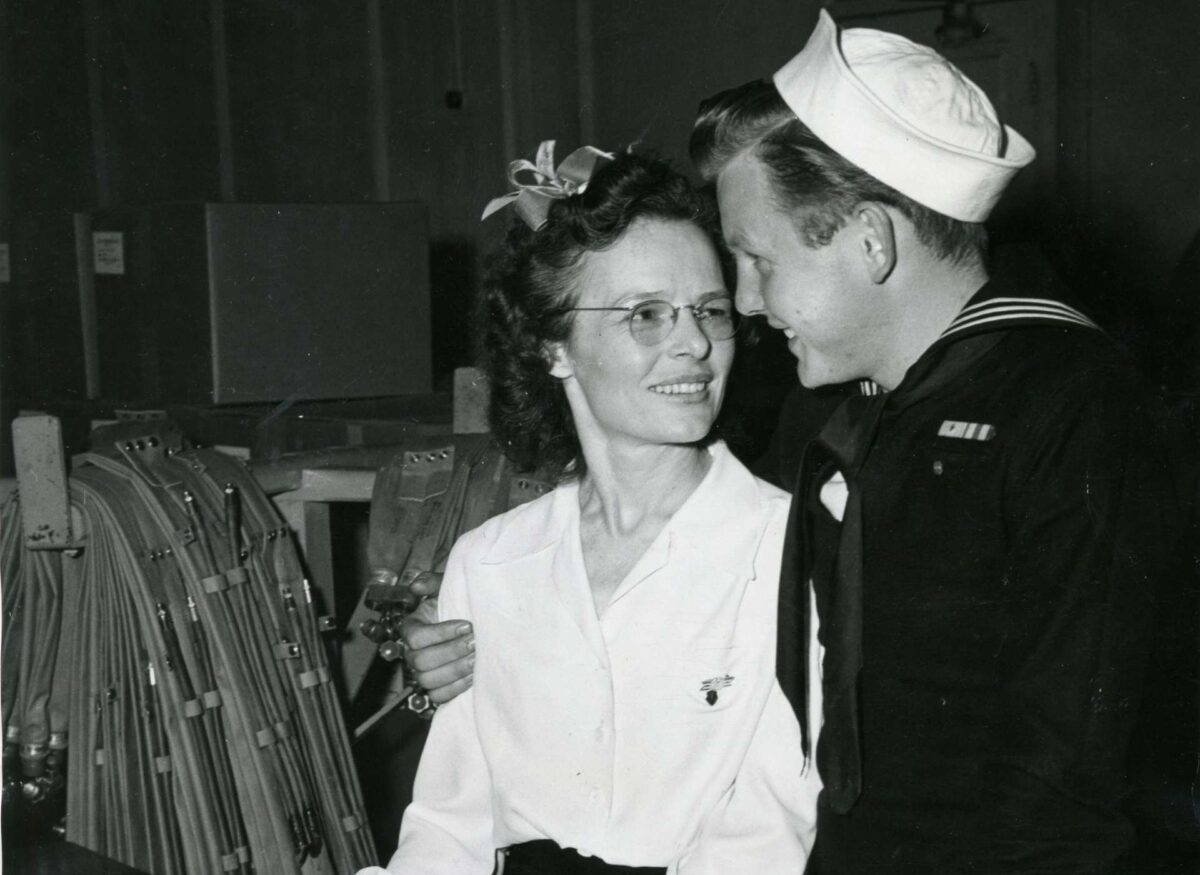Since the 1920s, Japanese naval planners had envisioned a scenario for war with the United States that would require “attrition operations,” writes historian Ian Toll in “The Conquering Tide.”
By 1942, in response to the American amphibious landings in the eastern Solomon Islands on August 7, Japanese Admiral Gunichi Mikawa intended on a surprise nighttime raid into Savo Sound to destroy the vulnerable American transports and cargo ships screening the Allied landing force.
In the night and early morning of August 8 and 9, the Japanese column slipped into the channel between Savo and Guadalcanal undetected. By 1:31 a.m., Mikawa had signaled “Every ship attack.”
Among those battered awake by 5- and 8-inch shells was 19-year-old Navy Signalman 3rd Class Elgin Staples of Akron, Ohio, aboard the New Orleans-class cruiser the USS Astoria.
“Peppered along her length by 25mm machine-gun fire…One heavy projective struck the barbette of turret No. 1, knocking the weapon out of action and killing all personnel in the area. Another slammed home in the No. 1 fireroom, and a third stuck a kerosene tank on the starboard side amidships, spilling blazing fuel across the well deck,” writes Toll.
Swept into the air and out to sea from the concussive blasts, Staples found himself dazed, wounded by shrapnel to his legs, but alive — thanks to his M1926 inflatable rubber life belt strapped around his waist.
“I began treading water, trying to stay calm as I felt things brushing against my legs, knowing that if a shark attacked me, any moment could be my last,” he later wrote. “And the sharks weren’t the only danger: The powerful current threatened to sweep me out to sea.”
Rescued nearly four hours later by the destroyer USS Bagley (DD-386), Staples and other survivors were tasked to return and try to salvage the heavily damaged, burning Astoria, which was now attempting to beach itself off the shallow waters of Guadalcanal.
“Those efforts failed, as Astoria took on a dangerous list before finally sinking at approximately 1200 hours, putting Staples back into the water, still wearing the same life belt,” according to the National WWII Museum.
More than 200 men were lost aboard the Astoria, with Allied dead totaling 1,023 and 709 wounded during the Battle of Savo Island. The attack, according to the Naval History and Heritage Command “has come to be identified as the worst defeat in a single fleet action suffered by the United States Navy.”
Picked up by the USS President Jackson the following day and evacuated to New Caledonia, it was only then that Staples felt safe enough to remove his lucky life belt.
To his surprise, he discovered that the belt that had saved him from drowning twice before had been manufactured by the Firestone Tire and Rubber Company in his hometown of Akron, Ohio.
But soon, the connection ran even deeper.
Returning home on leave shortly after the battle, Staples reunited with his mother, Vera Mueller-Staples. In a 2001 recounting, Staples wrote about what occurred next:
After a quietly emotional welcome, I sat with my mother in our kitchen, telling her about my recent ordeal and hearing what had happened at home since I had gone away. My mother informed me that “to do her part,” she had gotten a wartime job at the Firestone plant. Surprised, I jumped up and grabbing my life belt from my duffel bag, put it on the table in front of her.
“Take a look at that, Mom,” I said, “It was made right here in Akron, at your plant.”
She leaned forward and taking the rubber belt in her hands, she read the label. She had just heard the story and knew that in the darkness of that terrible night, it was this one piece of rubber that had saved my life. When she looked up at me, her mouth and her eyes were open wide with surprise. “Son, I’m an inspector at Firestone. This is my inspector number,” she said, her voice hardly above a whisper .
We stared at each other, too stunned to speak. Then I stood up, walked around the table and pulled her up from her chair. We held each other in a tight embrace, saying nothing. My mother was not a demonstrative woman, but the significance of this amazing coincidence overcame her usual reserve. We hugged each other for a long, long time, feeling the bond between us. My mother had put her arms halfway around the world to save me.
Staples returned to active duty shortly after, alive, thanks — in large part — to his mother.
GET HISTORY’S GREATEST TALES—RIGHT IN YOUR INBOX
Subscribe to our HistoryNet Now! newsletter for the best of the past, delivered every Monday and Thursday.





